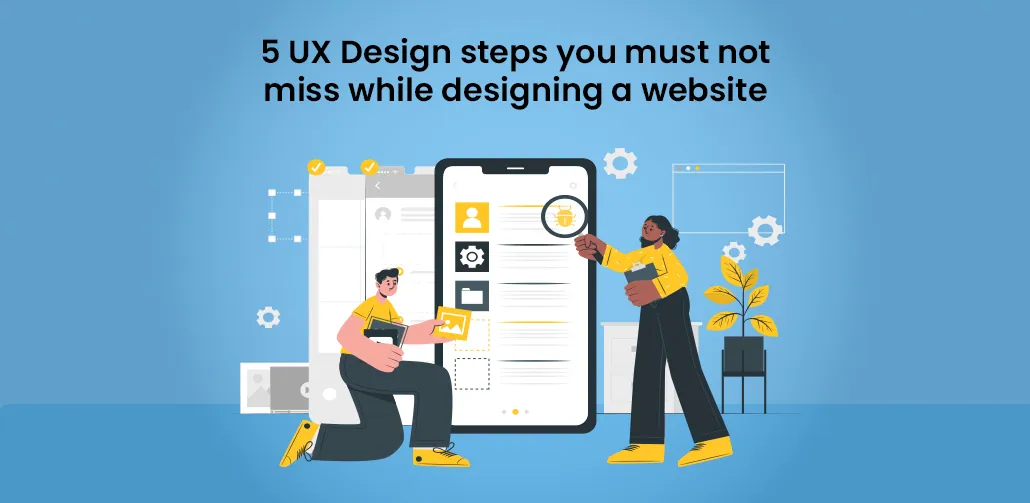BLOG
5 UX Design steps you must not miss while designing a website
What elevates a website from good to great? Is it how fast it loads or how good it looks? A successful website is the one that leaves a user satisfied and happy. It means, not only can the user find relevant information quickly, but also feel good about interacting with the brand and the organisation. One of the most foolproof ways to ensure that your user has a great experience on your website is investing in a UX Design Strategy.
UX Design Strategy is an intensive, multi-step process that involves robust research and analysis. The data generated through these efforts then guides your design, functionality and technology decisions, helping you build a website that takes you a step closer to your business goals and elevates the user experience on your website from good to great. Here are five factors of user-centric design that you must take into consideration while designing a website.
Consider this as a checklist of quick-to-do-things that can help you improve the user experience on your website:
1. Conduct User Research – You are designing a website for your users to interact with your brand. Naturally, then, you need to get a clear understanding of their needs, behaviours, motivations and pain points. These insights can guide your content strategy and design decisions. A quick way to go about it is by doing a survey that asks users about their preferences. You can upload this survey to your website or send it to your users via email. You can also refer to this guide to conduct effective user research.
2. Create an Information Architecture – Information architecture is the blueprint of your website. Once you have the user insights, you need to organise the information effectively to create an information architecture. Consider user flows, content hierarchy and logical grouping. This information architecture can then be translated into a wireframe, which becomes the skeleton of your website. A wireframe is a visual guide that helps you plan the placement of elements and content. It will dictate the design of your website.
Furthermore, an effective information architecture helps you create intuitive navigation, which allows the user to find relevant content easily and in as few steps as possible. Build a clear menu structure and place call-to-actions strategically to facilitate a seamless navigation experience, reducing the cognitive load and enhancing the overall usability.
3. Design for Mobile-First – With the rise in the use of mobile phones, it has become critical to design a website that works efficiently on mobile devices. A mobile-first design helps you cater to a significant portion of your audience. You can also build a responsive website that adapts to different screens, providing a consistent experience irrespective of the device.
4. Establish visual hierarchy – Large paragraphs of text are a big put-off. They are not legible and make it difficult to retain information. The best way to approach website content is to break it down into smaller chunks, use headings and subheads to establish a clear visual hierarchy to guide users' attention, and prioritise important content.
Use visual cues such as size, colour, contrast and typography to highlight key elements such as headlines, subheadings and relevant images. Incorporate clear and compelling calls-to-actions throughout your website to prompt users to take desired actions.
5. Prioritise accessibility – Your website should cater to all users, including those with disabilities. Follow accessibility guidelines like the Web Content Accessibility Guidelines (WCAG 2.0) to ensure a smooth user experience for all users. Providing alternative text for images, offering keyboard navigation and prioritising contrast ratios and font sizes to enhance readability for users with visual impairments are a few things you can do. Accessibility not only broadens your audience but also builds an inclusive brand image.
In a digital landscape where user expectations are high, implementing these UX must-dos will not only set your website apart but also foster user loyalty and satisfaction. By prioritising the user at every step, you can create a digital space that not only meets but exceeds expectations.
To get in touch for our services or any other communication requirement, please contact + 91 842 581 4016 / 17 or simply drop an email at solutions@ticworks.com.




